How to configure Gmail to work for you, not against you
Email should be a tool, not a nuisance. Here’s how it works.
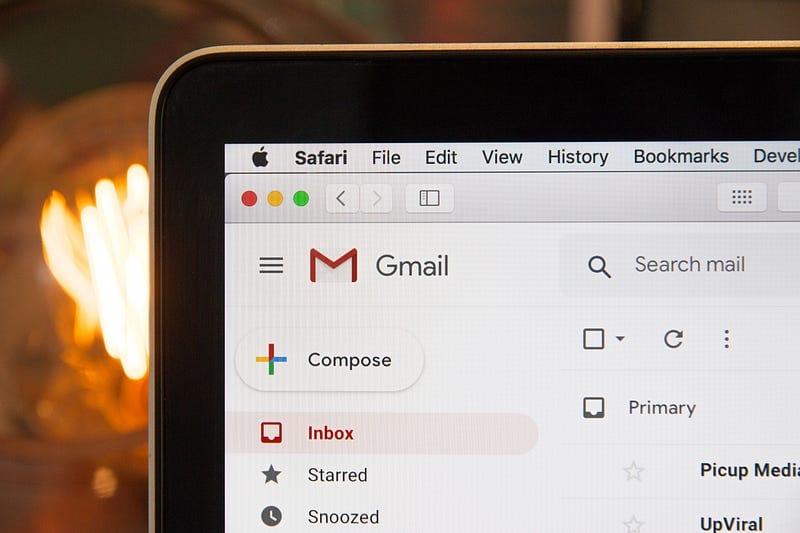
“You have read all messages in your inbox.”
To many of us, this is porn. The infamous Inbox Zero has been reached. All email has been taken care of. Nothing to see here anymore.
Inbox Zero comes at a cost: “During the workday, respondents reported spending an average of 209 minutes checking their work email and 143 minutes checking their personal email, for a total of 352 minutes (about five hours and 52 minutes) each day.”, according to CNBC.
Can you believe that? Assuming an 8-hour-workday, this leaves about two hours each day for everything else, including coffee with colleagues, chit-chat in the office and well, a tiny bit of actual meaningful work.
Essentially, the average American office worker does nothing but write and read email. The Germans are a little better with 2 hours per day, but the data is 5 years old and probably not super representative.
While communication is an important part of working in today’s world, it shouldn’t be the only thing we do. There are more important things out there that need to be done.
Why do we spend so much time on email?
Email is a “productive” distraction. When you’re doing something hard and you’re willing to procrastinate, there’s nothing better than “quickly checking your email”, only to realize that you’ve gone down the rabbit hole for another 30 minutes yet again.
Also, some bosses and clients have unreasonable expectations regarding turnaround time. If you always want a reply within 15 minutes, you shouldn’t be surprised that your employees spend all day in their inbox.
Last but not least, email is amazingly easy to work with. You read, you reply, you do. You don’t have to actively think about what to do next, because the emails will tell you.
However, if you’re only reacting, you will never get anything truly important done. Therefore, let’s make ourselves less reactive and more proactive — by setting up our inbox in a way that it works for us, not against us.
Step 1: Designing your workday
As much as I’d like to tell you to simply forget about email and stop using it, it is an integral part of our working lives. That doesn’t mean that you have to let it direct your day, though. Rather, you should have your day direct your email.
You can do so by batching. This means that you don’t have your inbox open all the time, but work through email in blocks of time.
My email schedule looks like this:
- 11:00 am: first batch of emails, reacting to anything that came in that morning or during the night; this block usually lasts about 30 minutes. Note that at 11am, I’ve already gotten in at least two hours of focused, productive work — I’m most productive in the mornings, so I don’t want any distractions there.
- 12:40 pm: I have lunch at 1, and the 20 minutes before lunch I’m usually not hyper-focused anymore. I use that time to learn. Every day, I receive a few curated newsletters (among them, Inc. This Morning, the Medium Daily Digest, the Zapier Blog and more). This is a good time to get some input. If I don’t manage to read all of them, that’s okay — then they go straight to the bin.
- 04:00 pm: second batch of emails; working through the reactions from the previous batch, and setting up stuff for the following day. Most of my clients leave the office around 4, so I’m dumping stuff in their inbox in order to have a reply in my next email batch.
- 06:00 pm: shortly before I leave, I check one final time to make sure I haven’t missed anything.
According to my Timeular time tracker, I spend around 43 minutes every day on Email. That’s significantly less than the numbers mentioned in the introduction, and batching is a big reason why.
Play around with different schedules and see what works for you. Maybe you really do need to check your inbox first thing in the morning, or more frequently. But please, please don’t have it open all the time.
Step 2: Managing expectations
Once you adopt the batching behavior, some people will be irritated. They’re used to receiving a reply quickly, and now they have to wait hours for one?
Nobody — especially not your boss — will blame you for wanting to be more productive. Therefore, simply explain to everyone who is concerned: “Hey guys, I’m trying to get more meaningful stuff done, so I won’t be checking my email as often. It could take up to 24 hours to receive a reply. If you need anything urgently, please call me.”
Note that obviously there has to be a way to reach you — but for most people, picking up the phone is more prohibitive than sending an email. If someone calls me, I know it’s urgent. So I answer the phone.
If they’re colleagues, you can also use Slack or that thing that people used to do all the time where you walk up to somebody and actually talk to them in real life. That works too.
My clients know my email behavior, they just call me if they need anything. Works surprisingly well.
Step 3: Inbox When Ready
When I open my Gmail, it looks like this:
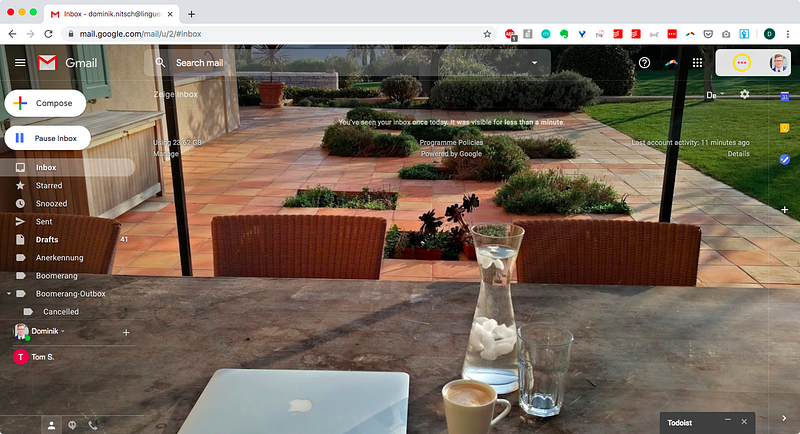
Nice, eh? No distractions, nothing — doesn’t even look like it’s there.
This is thanks to an awesome Chrome extension called Inbox When Ready. We’re all compulsive people, so it’s just natural to go to Gmail every once in a while. But then, you actively have to make the decision to look at your email by clicking on the button “Show Inbox” on the top left. Else, you simply won’t see it.
It also comes with a neat feature that if you’ve spent too much time in your inbox or have done so too often, it blocks you from accessing your email. After I’ve checked my email 7 times in a day, I have to wait 15 seconds every time before being able to see my email again.
If I’m just looking for one particular message, I check by searching for the name of the sender — then you only see read and unread messages related to that, but not everything else.
This is probably the single best time saving hack I’ve found, and if you take one thing away from this article, it should be this one.
Step 4: Setting up your inbox for proper email triage
Once you click the magic button, the inbox appears, sorted in the following order:
- Unread
- Starred
- Read
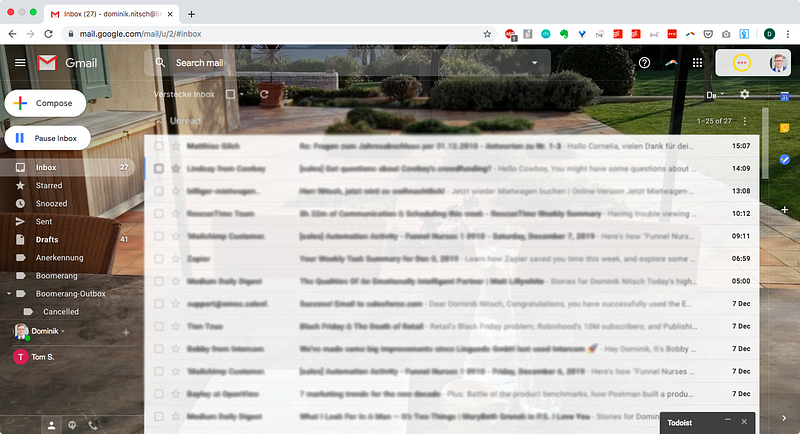
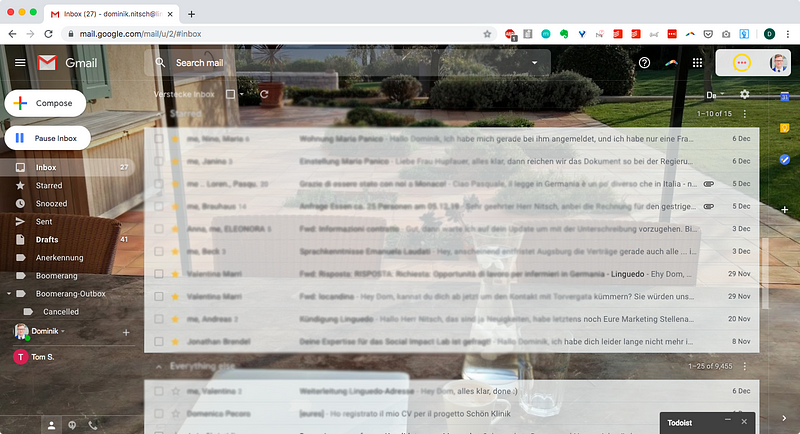
The purpose of this design is to be able to go through the emails as quickly as possible. The triage process works as follows:
- Delete or archive all emails that aren’t relevant.
- Mark as read everything that you may need in the future, but currently isn’t relevant
- For each email, go through the following loop:
Does the email require an action (i.e. replying, forwarding, saving a file)? No? Perfect, you’re done.
If yes, does the action take longer than 2 minutes? No? Do it right away. Yes? Star it, and come back to it later.
4. Rinse and repeat for every email
Then, go through all your starred emails. What needs to be done? Write this down in a task (I use the Todoist for Gmail Integration), and add it to your to-do-list.
Boom — you’ve just gone through all your emails and ensured you’re not going to miss anything.
To set up this inbox, go to the gear icon and click on “Settings”. Navigate to the tab “Inbox”. For “Inbox Type”, select “Priority Inbox”. Sort the sections by “Unread”, “Starred”, “Everything else” and you’re good to go!
Step 5: Add tools to become more productive
Boomerang. Boomerang is an extension for Chrome that allows you to do two things: you can loop emails back to you at a later point in time (for instance, if you receive an email that prompts you to follow up in two weeks, you can schedule the email to reappear two weeks from today), and to send emails at any given point in time.
Especially the second feature is very powerful. People tend to read the emails on top of their inbox first. So, for instance, if I’m following up on a lead, I will schedule the email to be sent Monday morning at 08:03 am. Thus, when the person first checks their email on Monday morning, my email will be on top — despite the fact that I actually wrote it on a Thursday. This can save a lot of time and headache.
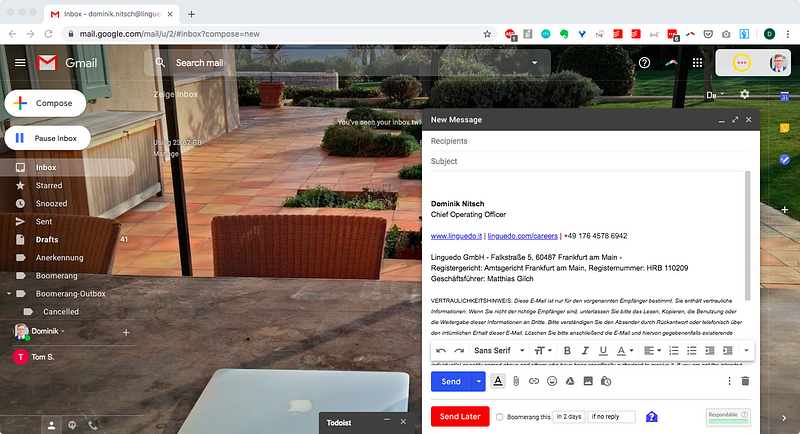
CRM integrations. We use Salesforce as Customer Relationship Management System. Thanks to Einstein Activity Capture, all incoming and outgoing emails from Gmail are logged automatically in Salesforce. This saves a ton of time, and allows everyone involved in the deal to stay on top of communication at all times.
Canned Responses. Sometimes, you have to send the same message over and over again. For example, when sending an invoice to a client, chances are you’ll use the same text over and over again. With Canned Responses, you can simply click “Insert Template”, and then just adjust whatever you need to adjust. This has saved me a lot of time scheduling interviews with candidates, sending invoices to clients, and streamlining communication inside the company.
Undo Send. Do you know that feeling when you send an email and then immediately realize you forgot the attachment, or misspelled the recipient’s name (no, “Luara” is not a real name)?
Now you can simply catch the email by clicking “Undo” in the bottom left corner. Navigate to the gear icon and then to “Settings”, “General” and then select the time you’d like to be able to undo your sending.
The way this works is that the email is stored in a temporary outbox. This means that only after the time for Undo Send is over, the email will actually be sent. Therefore, if you send an email, be prepared to have to wait 30–60 seconds before it actually arrives.
Step 6: Automate your inbox
Now, do you really have to do everything manually? In this day and age, of course not. There are plenty of tools that can automate repetitive tasks, if you use them intelligently. Here are a few hacks that I use.
Automatic Invoice Filing. As the COO, I receive a lot of invoices, and most of them are paid already since they run on credit card. For our accounting, they need to be stored somewhere. Using Zapier, you can create an automation that does exactly that.
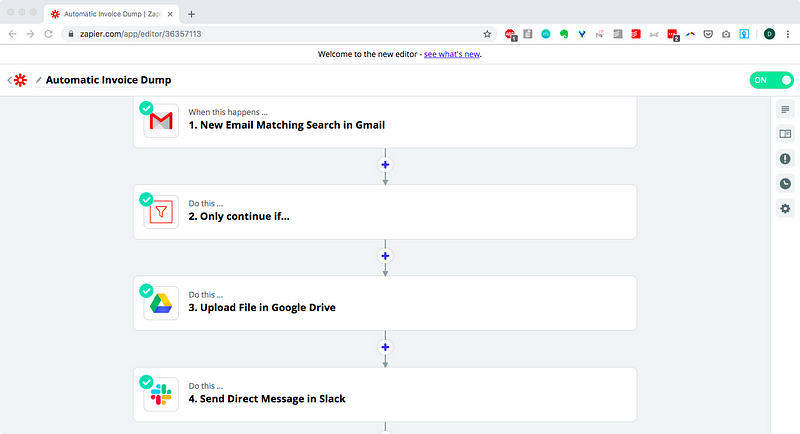
The way this works is as follows: whenever I receive an email that contains the words “invoice”, “receipt”, “Rechnung” or the like in the subject or comes from a specific email address, the Zap triggers. It only continues if an attachment is there, because without attachment you can’t upload anything. Then, the attachment is renamed to the current time, and uploaded to a designated folder in Google Drive. I then receive a confirmation message in Slack.
In case you’re interested, my query is this: subject:invoice OR subject:order OR from:buchungsbestaetigung@bahn.de OR from:billing@zapier.com
Automatically subscribe newsletter readers. I have a newsletter that I send out using SendInBlue. And since I love my readers, I offer that you can just shoot me an email and I’ll personally subscribe you.
The truth is, I have to admit, that I don’t do it personally. Instead, Zapier searches for emails with the exact subject “Please subscribe me” (which I ask people to send me) and then signs them up with first and last name and their email in SendInBlue. The email is then marked as read.
Filter out updates. As a former JIRA user, I used to get a lot of notifications from JIRA that would clutter my inbox. In order to not lose sight of what was truly relevant, but still to receive the emails, I used a Gmail filter. Whenever an email would arrive with “JIRA” in the subject, it’d be labeled “JIRA” and moved to the designated folder. Thus, my inbox was clean, but I still had all the updates in one box.
You can create filters in “Settings” → “Filters and blocked addresses”.
There are a ton of things you can do using Zapier, just play around with it. It’s a superb tool to hack your productivity and automate stuff that is boring and that you’d otherwise forget.
This is how I run my email. Email should be a tool, not your main time consumer. Use it, but use it properly.
A lot of these principles also apply to other email clients, I just happen to be using Gmail, along with more than 1 billion people in the world.
I hope you enjoyed this article, and will be able to free up some time to focus on the truly important things. Email shouldn’t be one of them.
Go get your focus back.
If you’ve enjoyed this article, you might want to check out my bi-weekly newsletter about becoming a more effective person. I feature a lot of articles like this one there: actionable, pragmatic, and straight to the point. Find it here.
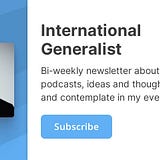
PS: If the title of this article sounds familiar, it’s probably because you’ve read the greatest post ever written on Medium: How to configure your phone to work for you, not against you. It’s the most in-depth primer on smartphones I know, and I highly suggest you give it a read.
Dominik Nitsch Newsletter
Join the newsletter to receive the latest updates in your inbox.


